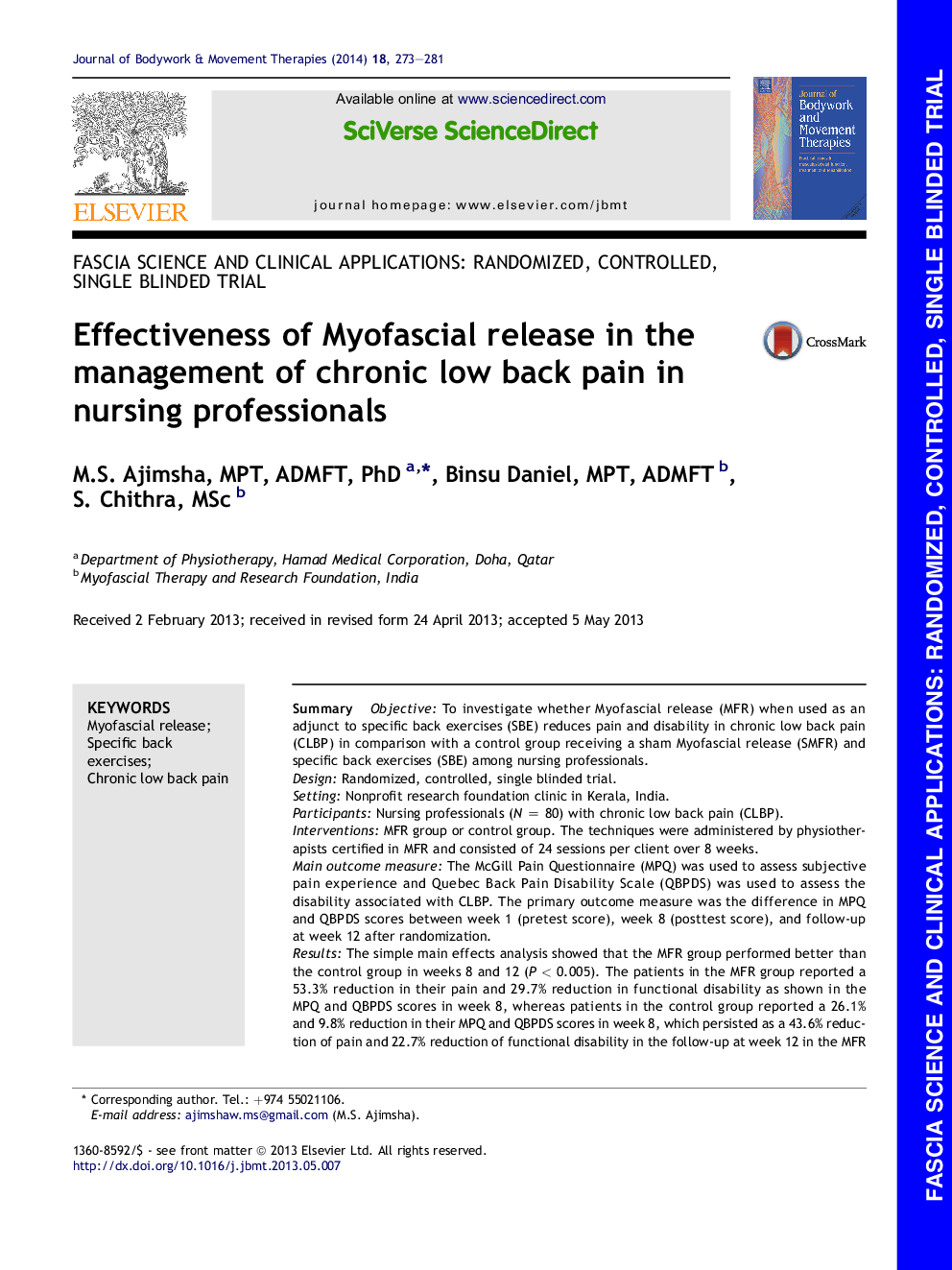| Article ID | Journal | Published Year | Pages | File Type |
|---|---|---|---|---|
| 2619231 | Journal of Bodywork and Movement Therapies | 2014 | 9 Pages |
SummaryObjectiveTo investigate whether Myofascial release (MFR) when used as an adjunct to specific back exercises (SBE) reduces pain and disability in chronic low back pain (CLBP) in comparison with a control group receiving a sham Myofascial release (SMFR) and specific back exercises (SBE) among nursing professionals.DesignRandomized, controlled, single blinded trial.SettingNonprofit research foundation clinic in Kerala, India.ParticipantsNursing professionals (N = 80) with chronic low back pain (CLBP).InterventionsMFR group or control group. The techniques were administered by physiotherapists certified in MFR and consisted of 24 sessions per client over 8 weeks.Main outcome measureThe McGill Pain Questionnaire (MPQ) was used to assess subjective pain experience and Quebec Back Pain Disability Scale (QBPDS) was used to assess the disability associated with CLBP. The primary outcome measure was the difference in MPQ and QBPDS scores between week 1 (pretest score), week 8 (posttest score), and follow-up at week 12 after randomization.ResultsThe simple main effects analysis showed that the MFR group performed better than the control group in weeks 8 and 12 (P < 0.005). The patients in the MFR group reported a 53.3% reduction in their pain and 29.7% reduction in functional disability as shown in the MPQ and QBPDS scores in week 8, whereas patients in the control group reported a 26.1% and 9.8% reduction in their MPQ and QBPDS scores in week 8, which persisted as a 43.6% reduction of pain and 22.7% reduction of functional disability in the follow-up at week 12 in the MFR group compared to the baseline. The proportion of responders, defined as participants who had at least a 50% reduction in pain between weeks 1 and 8, was 73% in the MFR group and 0% in the control group, which was 0% for functional disability in the MFR and control group.ConclusionsThis study provides evidence that MFR when used as an adjunct to SBE is more effective than a control intervention for CLBP in nursing professionals.
